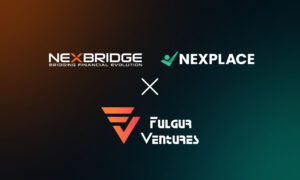Over the past decade, many Fintech startups have struggled to successfully break into the finance industry and actualize their goals due to the constraints that come with building their own banking systems from scratch.
However, thanks to a new technology-driven innovation known as Banking-as-a-Service, Fintech companies can provide their customers with banking functionality by leveraging the systems of FDIC-insured banks to serve their own customers – without having to build their own proprietary banking infrastructures.
Choosing Your BaaS Provider
Your BaaS provider could be the difference between being able to scale your Fintech product seamlessly or being forced to take things extremely slow and therefore falling behind your competitors.
So with that said, here are some boxes a BaaS provider needs to tick for them to worth utilizing;
Expansive APIs
An Application Programming Interface or API for short is a piece of software that connects the database of a service with other softwares. It essentially acts like a bridge or middle man for softwares.
In the context of Banking-as-a-service-platforms – APIs connect banks directly with Fintech companies – like a digital handshake of sorts – allowing them to utilize a bank’s systems and offer their customers the ability to perform transactions like collect loans, open debit or credit accounts – similar to how they can with a bank.
However, some BaaS APIs offer a limited scope of services to Fintechs – for instance, some APIs might allow your fintech to facilitate loans and run a sub-general ledger system but it may not allow you to utilize prepaid card solutions or an e-wallet that connects to various online applications – hence the need to utilize BaaS platforms with APIs that offer expansive services – so your Fintech can have everything your customer needs under a single umbrella.
Long Term Vision
Financial applications and services will need to undergo perpetual growth in order to stay relevant to their respective marketplaces.
For instance, an online investing platform that only offers stock trading as a service today, may need to incorporate cryptocurrencies to retain their current user base considering the high interest in the crypto asset class from retail investors.
To take things a step further, the same online investing Fintech may also need to incorporate an NFT platform to their offerings in order to retain their user base and acquire new customers.
On that note, when choosing a Banking-as-a-Service provider, Fintechs need to partner with a provider that is focused on improving and evolving its offers in a bid to maintain relevance, stand out from the crowd and avoid going obsolete.
Layered Service Offerings
Choosing a good Banking-as-a-Service platform goes beyond finding one with rockstar banking and technology functionality. Instead, you should also be on the lookout for platforms that have great all-round services such as A-class fraud management, strong legal compliance and of course seamless onboarding for your specific type of Fintech.
In other words, if you run a lending Fintech, a fundraising Fintech or even an online investing firm, you should choose a BaaS platform with services tailored to your company.
International Coverage
If you intend to open your Fintech up to a global market, then you need to utilize a BaaS vendor that can provide banking services at an international scale.
In other words, when choosing your Fintech, you need to select a BaaS that has built a vast network of partners, allowing customized banking solutions for international markets in order to avoid being confined to a local market.
With that said, finding a Banking-as-a-Service provider that meets the aforementioned criteria will help Fintechs achieve their long-term goals.

































